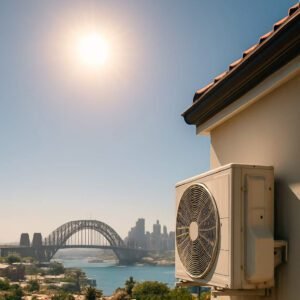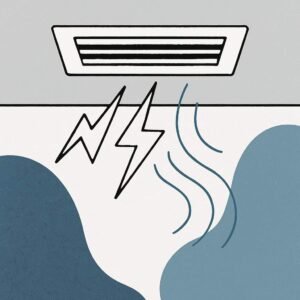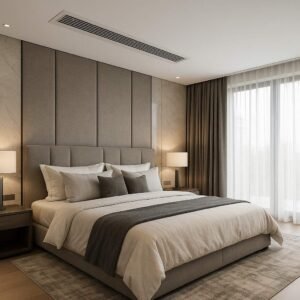Ultimate Guide to Air Conditioning in Sydney.
Installation, Maintenance & Best Systems by Air Cooling
Air Conditioning Installation Sydney






1. Sydney’s Climate and Why Air Conditioning Is Essential
Sydney is famous for its warm, sunny climate – but those beautiful summers can also bring intense heat and humidity. Average summer temperatures often hover around 28°C, and it’s common for heatwaves to send the mercury soaring into the high 30s or even above 40°C. February is typically the most humid month, with peak humidity around 76%. In western suburbs, the heat is even more extreme – temperatures there can run 5–10°C hotter than near the coast during summer heatwaves. Given these conditions, it’s no surprise that over 60% of New South Wales households have some form of air conditioning. Simply put, air conditioning in Sydney isn’t a luxury – it’s essential for comfortable living. A reliable AC system lets you stay cool and safe during scorching summers and can double as a heater on chilly winter nights (thanks to reverse-cycle technology). Modern air conditioning also dehumidifies your home, making those sticky humid days much more bearable.
Beyond comfort, air conditioning provides health and lifestyle benefits for Sydney homeowners. It helps maintain good indoor air quality (especially if you use quality filters) and offers respite during extreme heat events that could otherwise pose health risks. With electricity costs on the rise, an efficient AC can even be a smart way to manage climate control compared to older, inefficient cooling methods. In this ultimate guide, we’ll explore residential air conditioning Sydney homeowners rely on – covering system types, how to choose the best one, installation, maintenance, costs, and more. By the end, you’ll have a clear roadmap to achieving year-round home comfort with the help of Air Cooling’s professional services.
Summary:
Sydney’s summers bring intense heat and humidity, often soaring above 40°C. Reliable air conditioning is essential for comfort, health, and efficiency year-round. With modern reverse-cycle systems, you stay cool in summer, warm in winter, and save on energy costs.
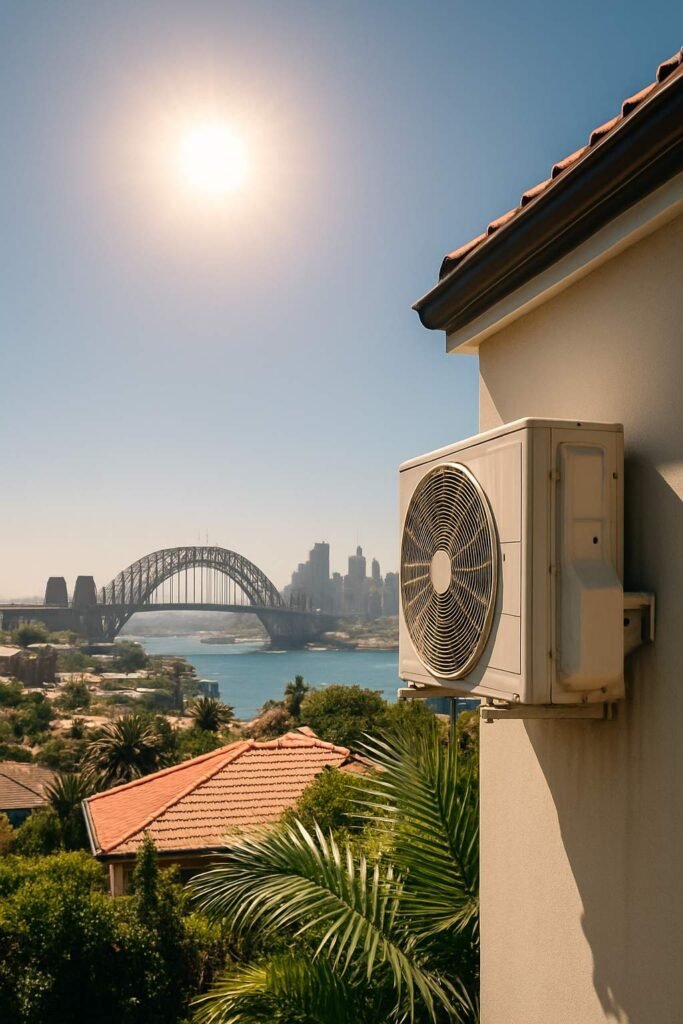
2. Types of Residential Air Conditioning Systems
When it comes to residential air conditioning in Sydney, there are three main system types that homeowners typically consider: split systems, ducted systems, and multi-split systems. Each type has its own design and is suited to different needs:
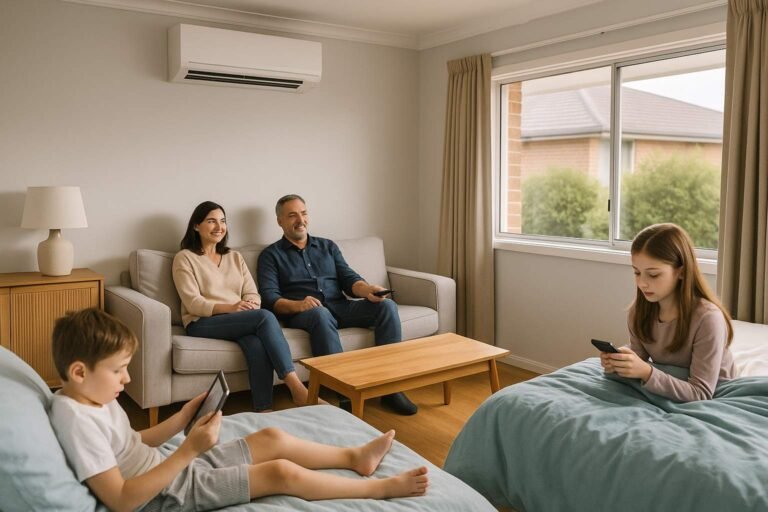
Split System Air Conditioners
These are the most common systems for cooling single rooms or open-plan areas. A split system has two components – an indoor unit and an outdoor unit – connected by refrigerant piping. The indoor unit is usually a wall-mounted unit (as shown below) that blows cool air into the room, while the compressor sits in the outdoor unit. Split systems are popular for apartments and individual rooms because they are relatively affordable, easy to install, and very efficient for smaller spaces.
Ducted Air Conditioning
Ducted systems are centralized cooling (and heating) systems designed to cool an entire home. A ducted AC has a large central indoor unit (usually hidden in the roof space or under the floor) that cools air and distributes it through a network of ducts to vents in each room. The condenser unit is outside, similar to a split system’s, but larger. Ducted air conditioning provides discreet, whole-home comfort – only small grilles or diffusers are visible in each ceiling or wall. This system is great for cooling many rooms at once and maintaining even temperatures throughout the house. However, ducted setups are more complex and often installed during construction or major renovations. (Notably, ducted split systems are essentially a type of split system where the indoor unit is ducted to multiple rooms).
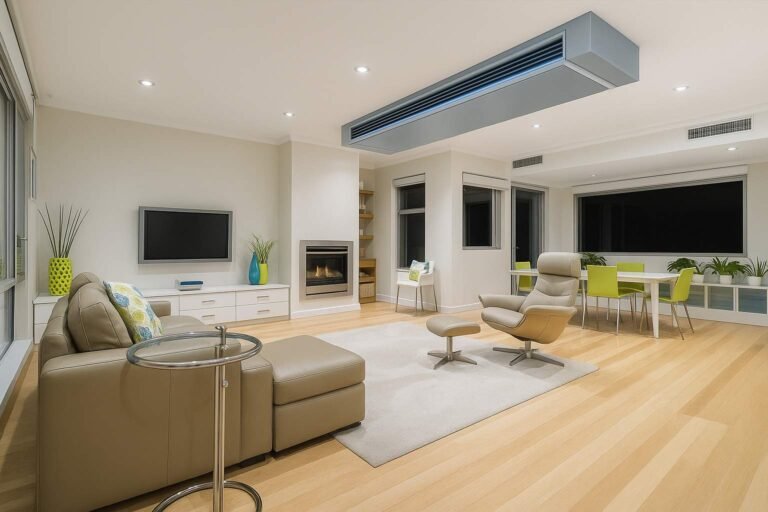
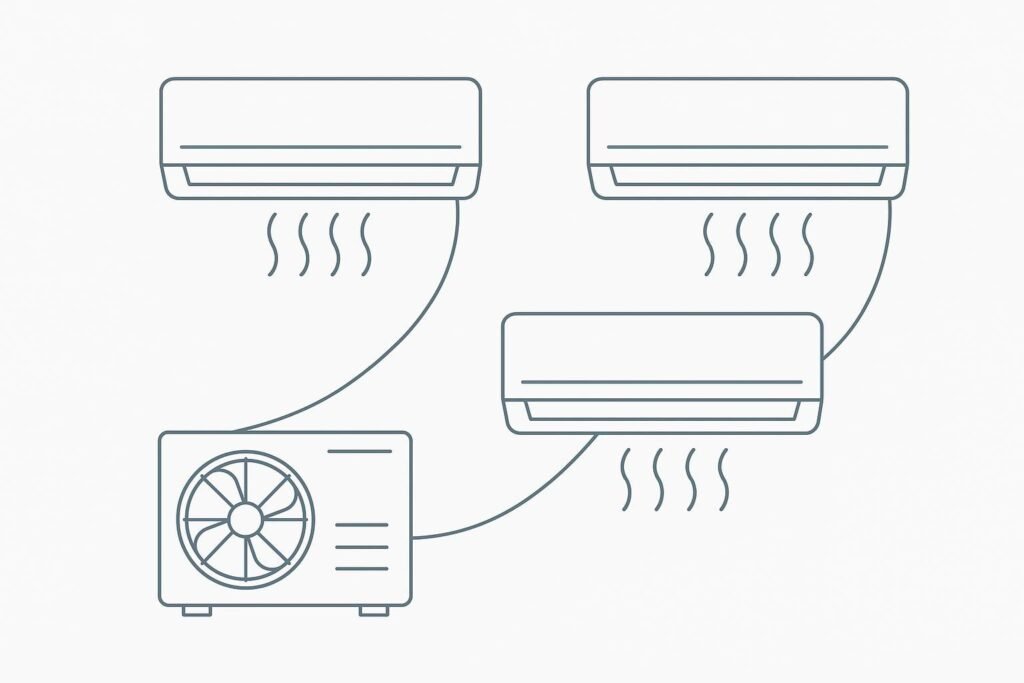
Multi-Split Air Conditioners
A multi-split system is a clever hybrid that lets you cool multiple rooms without full ductwork. It connects multiple indoor units to a single outdoor compressor. For example, you might have one outdoor unit powering three or four indoor wall-mounted units in different rooms. Each indoor unit can be controlled independently for personalized comfort in each space. Multi-splits are ideal when you have several rooms to cool but no room for ducts, or when you want to avoid having numerous outdoor units cluttering your exterior. They are common in townhouses, multi-story homes, or any situation where one outdoor unit is preferred.
In Summary:
Split systems are excellent for targeted cooling of specific areas and are budget-friendly
Ducted systems offer seamless whole-home comfort at a higher price
Multi-splits strike a middle ground by handling multiple rooms from one compressor.
Why Air Cooling is the best company for your requirements?
 Servicing Sydney with Fast Response
Servicing Sydney with Fast Response
 10+ years experience across Sydney
10+ years experience across Sydney
 Competitive pricing & transparent quotes
Competitive pricing & transparent quotes
 24/7 emergency service
24/7 emergency service
 Licensed & Insured Professionals
Licensed & Insured Professionals
3. How to Choose the Right Air Conditioning System for Your Home
Selecting the ideal air conditioning system for your home can feel overwhelming, but breaking it down into key considerations makes the decision much easier. Here are the main factors Sydney homeowners should evaluate when choosing between a split, multi-split, or ducted air conditioner:
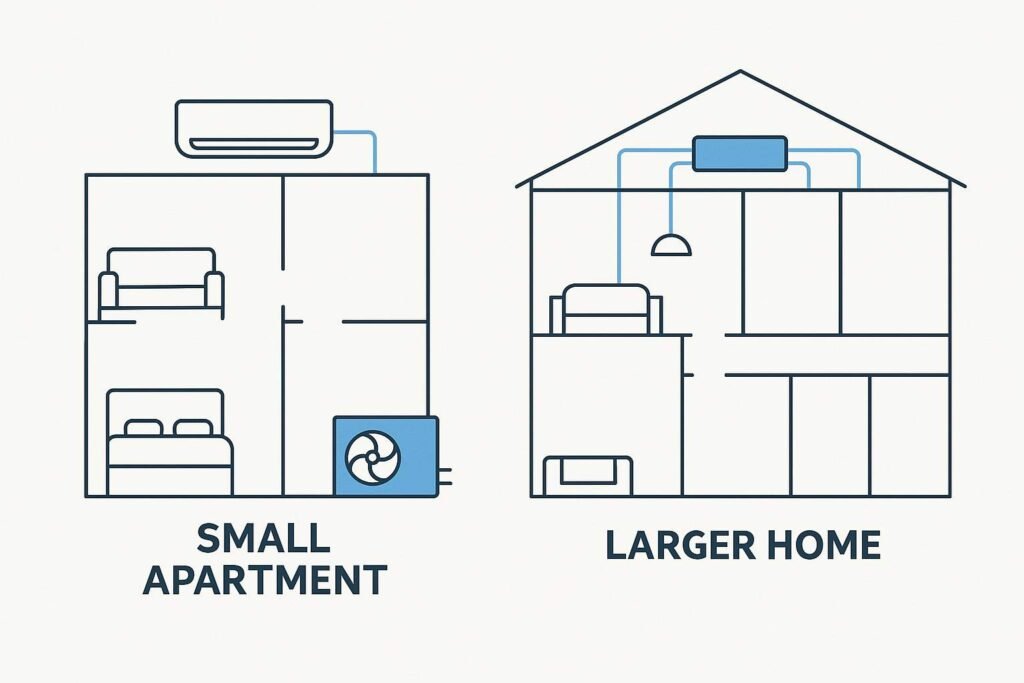
Home Size and Layout:
Consider how many rooms or areas you need to cool. If you have a small apartment or only want AC in one or two rooms (like the living room and main bedroom), individual split systems or a compact multi-split might suffice. For larger homes with many rooms, a ducted system or a larger multi-split could provide more uniform coverage. Also, think about the layout – open-plan spaces can sometimes be cooled by one split unit, whereas a home with many enclosed rooms might require multiple units or ducts to reach each space.
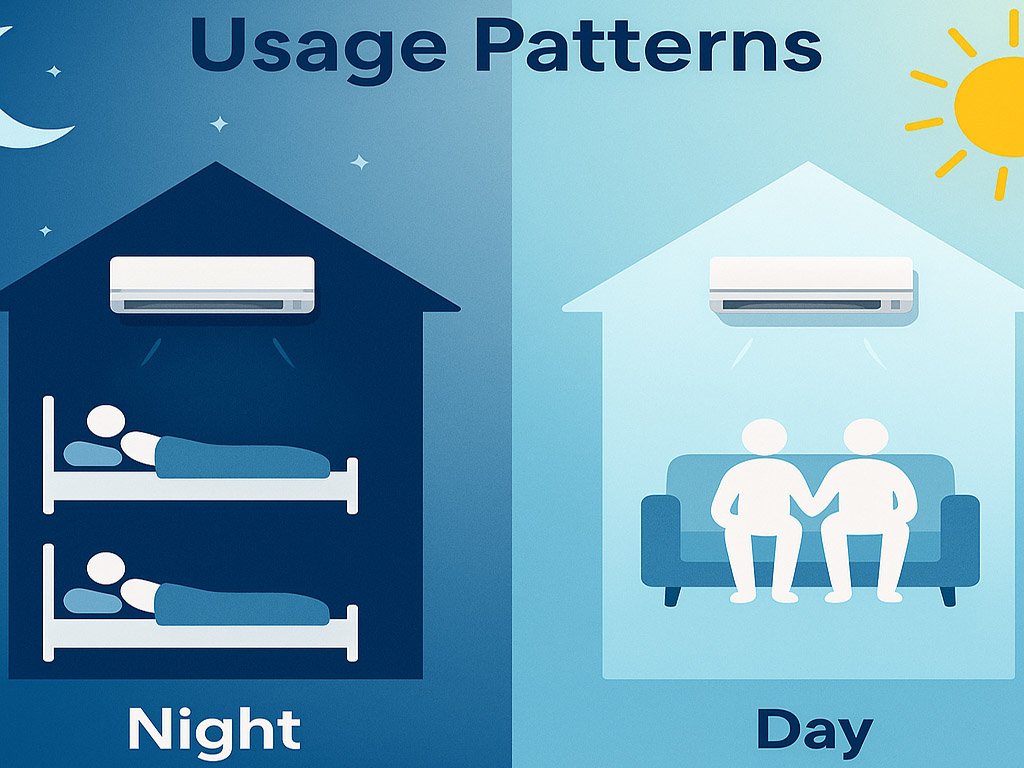
Cooling Needs and Usage Patterns:
Reflect on where and when you most need cooling (or heating). Do all bedrooms need cooling every night, or just on the hottest nights? Do you spend most of your day in one living area? If you primarily need one area cooled at a time, multiple split units controlled individually might be more energy-efficient. However, if your whole family occupies different rooms simultaneously (e.g. kids in bedrooms, parents in the living room in the evenings), a zoned ducted or a multi-split system can cool multiple spaces at once conveniently.
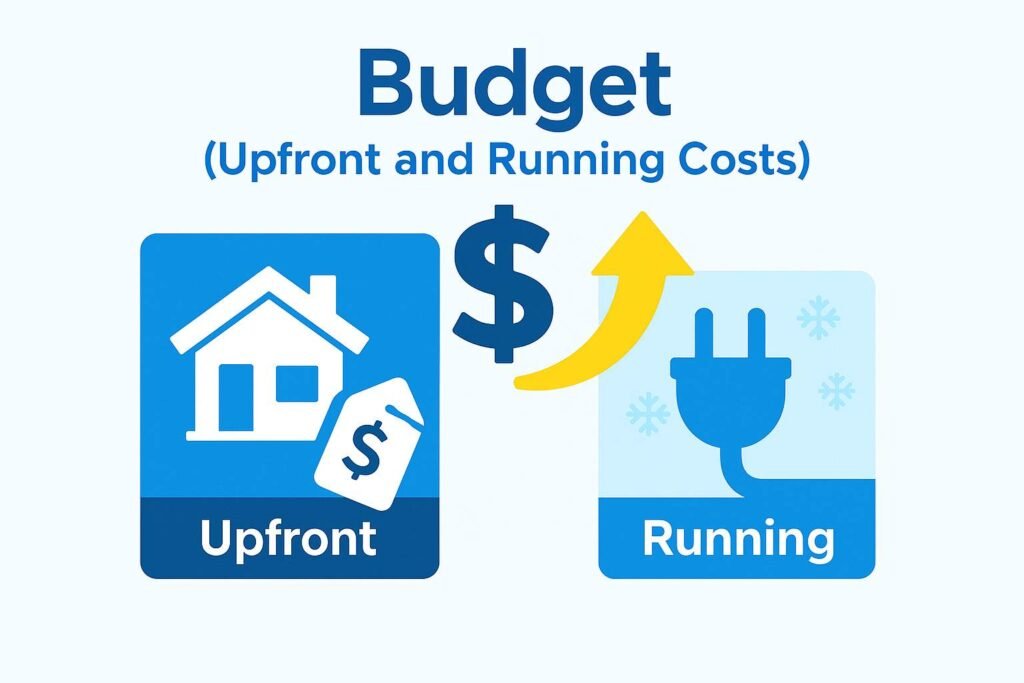
Budget (Upfront and Running Costs):
Budget is a decisive factor. Split systems have the lowest upfront cost – a single split AC including installation can range roughly from $1,200 to $3,700 for common sizes. Multi-split setups and ducted systems cost more. A multi-split for 3–4 rooms might cost, for example, $5,000–$9,000 installed depending on capacity. Ducted systems are the priciest, often $8,000 to $15,000 or more for a full installation in a house. Make sure to get quotes for different options and consider what fits your financial plan. Also factor in running costs: ducted can be more expensive to run if you cool the whole house, whereas split systems let you only cool the room you’re in (saving energy). Check energy star ratings – higher-rated units might cost more upfront but save money over time.
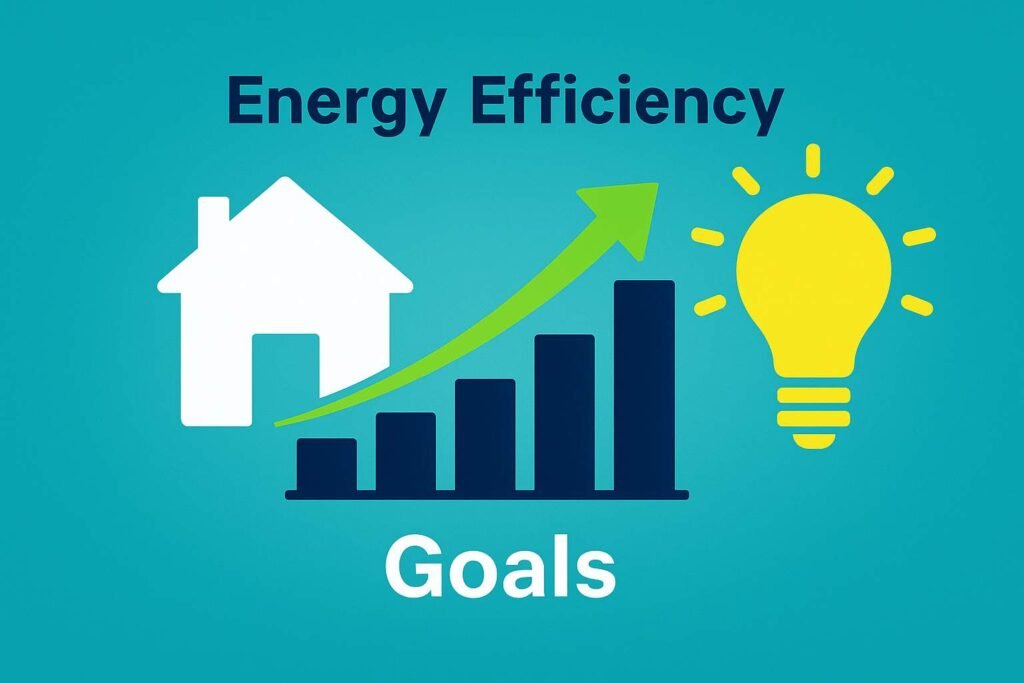
Energy Efficiency Goals:
Sydney’s electricity prices mean you’ll want an efficient system. Look at the energy ratings and features. If sustainability and low running cost are priorities, you might lean towards high-efficiency split systems or a well-zoned ducted system. Inverter technology, smart thermostats, and features like eco modes can significantly reduce energy consumption. In general, bigger is not always better – an oversized unit will cycle on and off inefficiently. It’s crucial to choose the right capacity (in kW) for each room. As a rule of thumb, a room of 20–25 m² might need a ~2.5 kW split system, whereas a 40–60 m² open plan area could need 5–7 kW. A professional load calculation from Air Cooling will ensure you get a properly sized system for efficiency and comfort.
Easy 3-Step Air Conditioning Services by Air Cooling
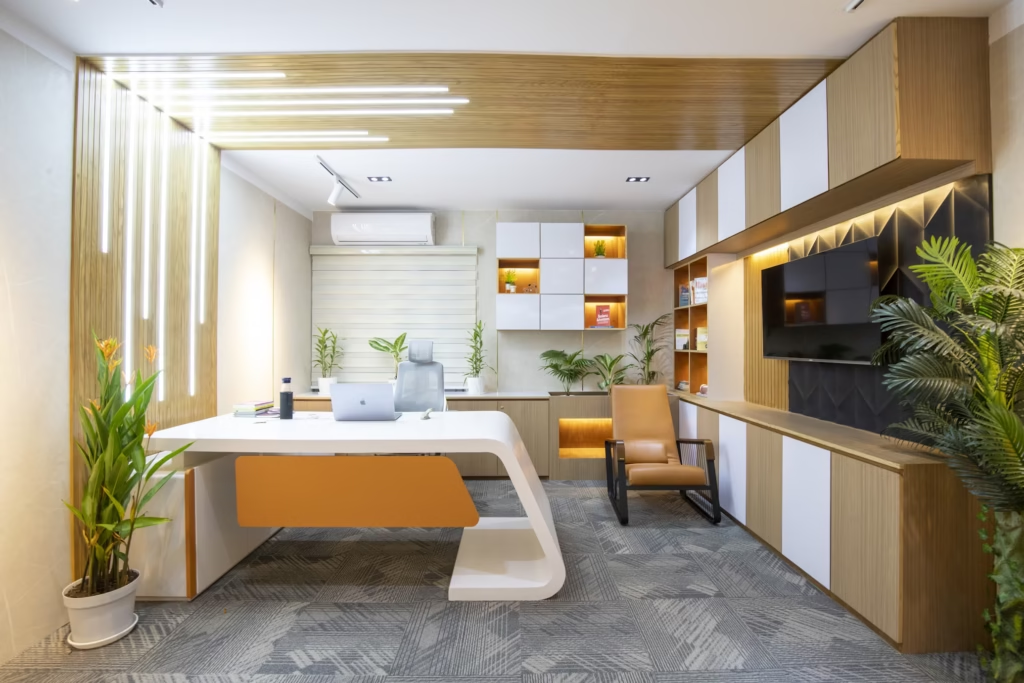
1. Enquire
2. Customized Solution
3. Order & Enjoy
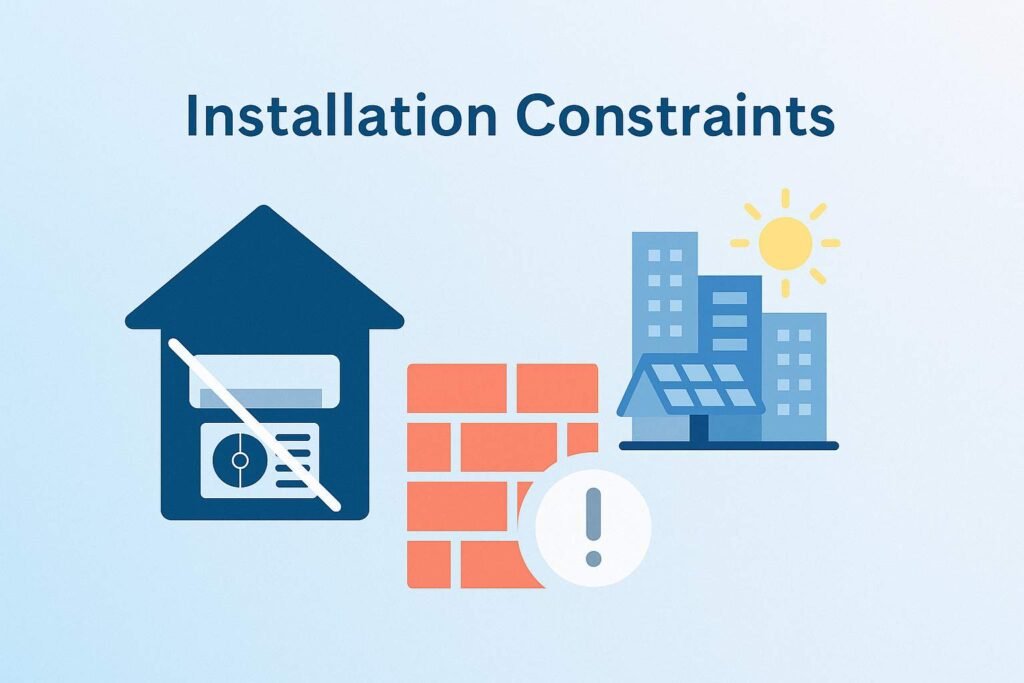
Installation Constraints:
Your home’s physical structure can dictate what system is feasible. Check if you have space for ductwork (for ducted) or multiple outdoor units (for several splits). If you live in a strata or apartment, there may be rules about placing outdoor compressors – a multi-split or a single discreet outdoor unit might be the only allowable solution. For heritage homes or those without ceiling access, ducted might be very difficult to install, making splits the default choice. Additionally, consider electrical capacity – older homes might need electrical upgrades to support a big ducted system’s power draw. Air Cooling’s team can assess your home and point out any limitations (like where an outdoor unit can go, or if additional work is needed to install a certain system).
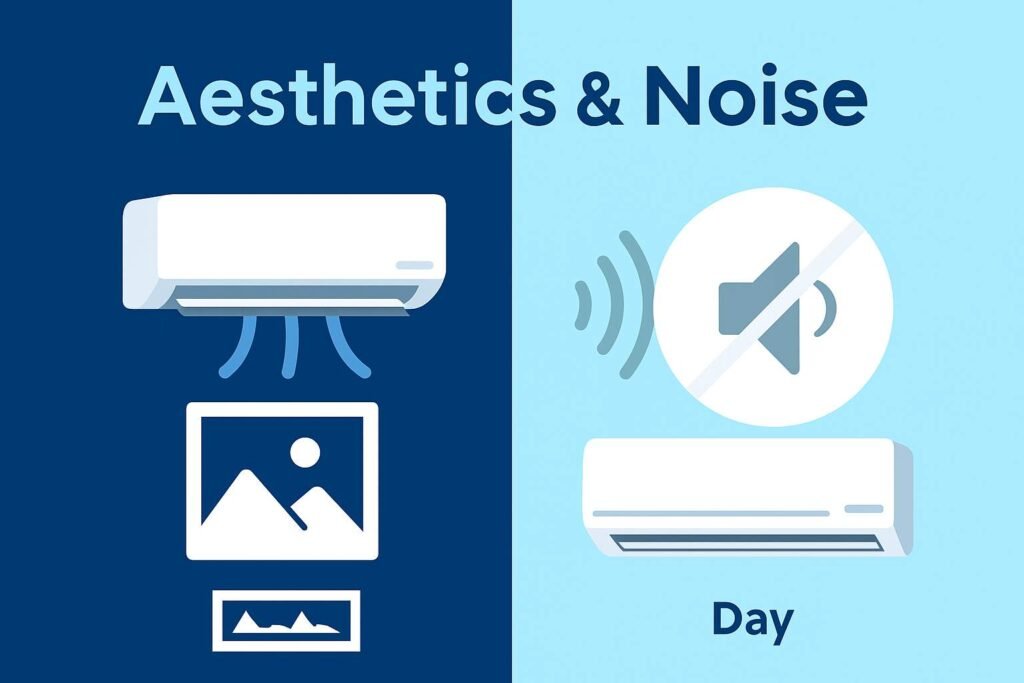
Aesthetics and Noise:
Think about whether it’s important to you to keep the air conditioning out of sight. If you dislike the look of wall-mounted units in each room, you might prefer a ducted system with subtle vents. On the other hand, if you’re okay with visible indoor units, splits or multi-splits will be fine. In terms of noise, all the mentioned systems are designed to be quiet indoors. But if you’re very sensitive to any hum, a ducted system may distribute the sound more and be virtually unnoticeable except for airflow. For outdoor noise, a single larger compressor (ducted or multi) vs. multiple small ones (splits) might be something to consider with regard to placement relative to bedrooms or neighbors.
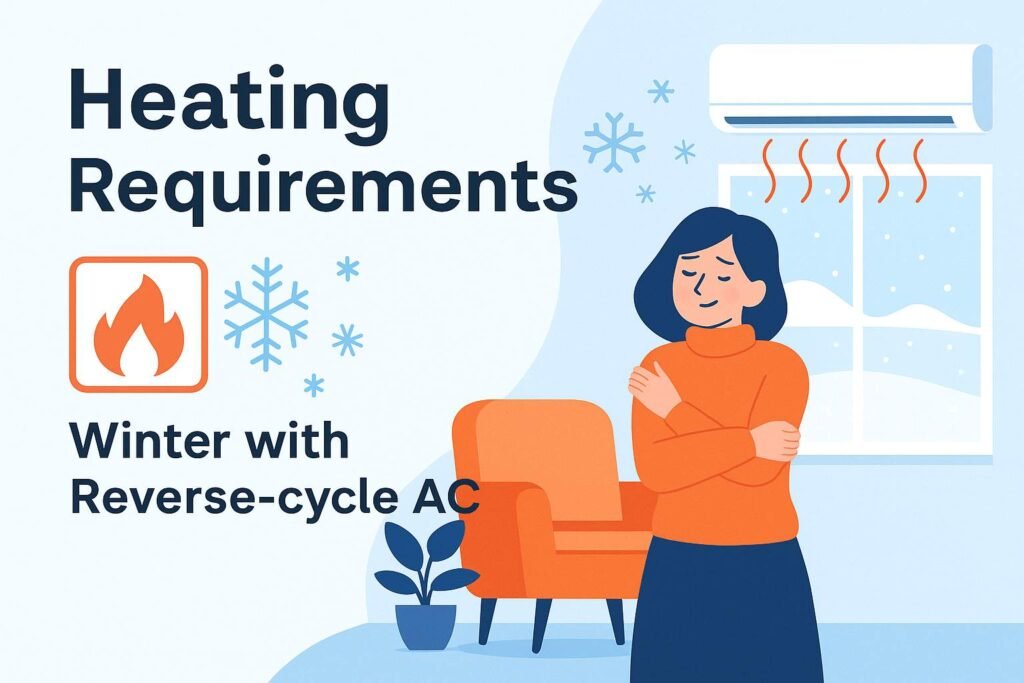
Heating Requirements:
Sydney does get cool in winter (especially at night), so most people opt for reverse-cycle air conditioners that also provide heating. All three system types come in reverse-cycle versions. Make sure the system you choose can adequately heat your space in winter as well, or consider if you have alternate heating. Reverse-cycle AC is actually one of the most efficient heating options for Sydney’s climate, often much cheaper to run than portable heaters or older electric heaters. So it’s worth sizing the system for heating needs too.
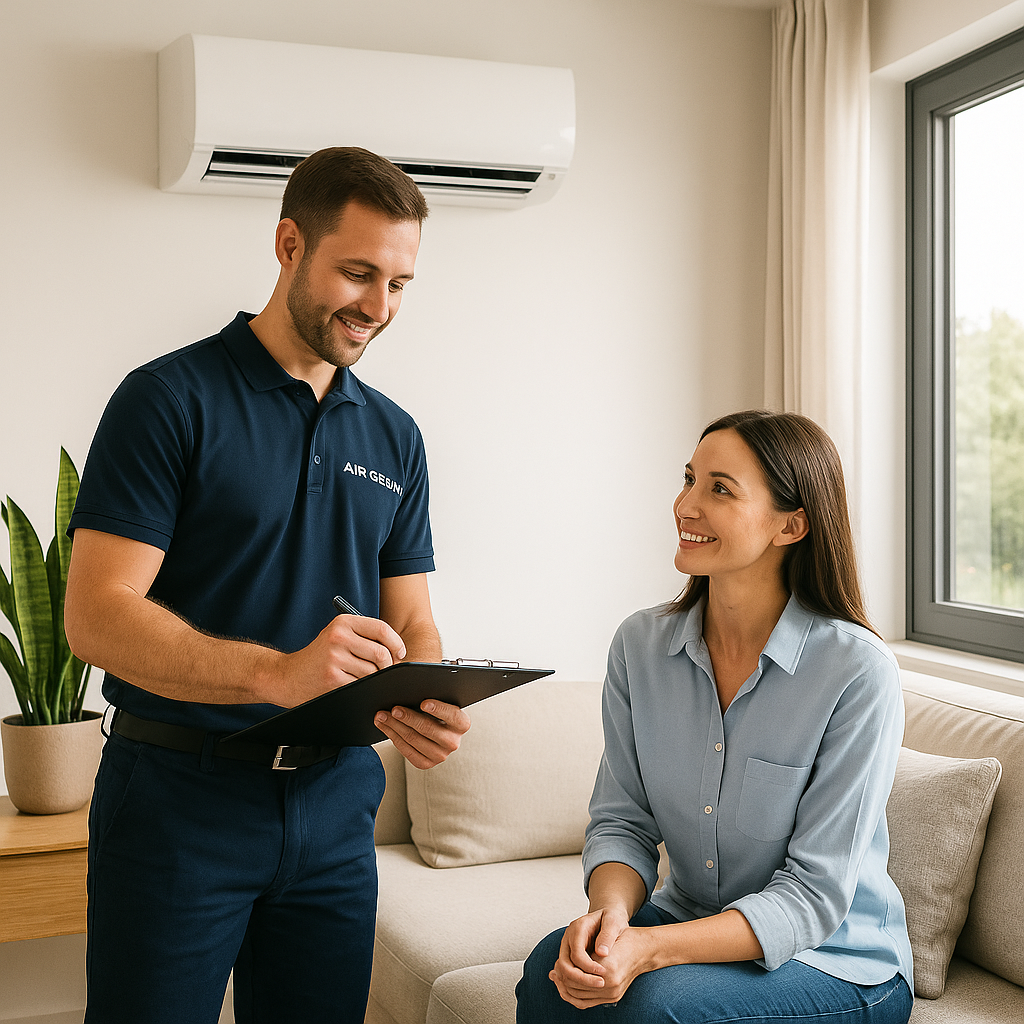
Summary:
By considering these factors, you can usually narrow down the best option. For instance, small unit or two-bedroom house? A couple of split systems might be perfect. Large family home? Ducted could offer the best whole-home comfort. No roof space and 3-4 rooms to cool? Maybe a multi-split system strikes the right balance.
If in doubt, you can always consult with Air Cooling for a professional recommendation. Our specialists will assess your home’s layout, insulation, and your usage preferences to suggest the most suitable, cost-effective solution.
Benefits of Regular Air Conditioning Servicing
 Lower energy bills thanks to improved efficiency
Lower energy bills thanks to improved efficiency
 Longer system lifespan by reducing wear and tear
Longer system lifespan by reducing wear and tear
 Better air quality with clean filters and components
Better air quality with clean filters and components
 Fewer unexpected breakdowns during peak seasons
Fewer unexpected breakdowns during peak seasons
 Compliance with manufacturer warranties
Compliance with manufacturer warranties
4. General Installation Process by Air Cooling
So you’ve decided on the type of air conditioning system – what comes next? At Air Cooling, we pride ourselves on making the installation process smooth and hassle-free for our Sydney customers. Here’s what you can generally expect when you engage Air Cooling for an air conditioning installation in Sydney:
Initial Consultation & Onsite Assessment:
It often begins with an expert from Air Cooling visiting your home (free of charge) to evaluate your space and discuss your needs. We’ll look at room sizes, layout, existing wiring, and the best locations for units or ducts. This step is crucial for determining the right system capacity and design. Feel free to share your concerns, like wanting a unit hidden in a particular spot or noise considerations – we tailor our plan to your home’s unique requirements.
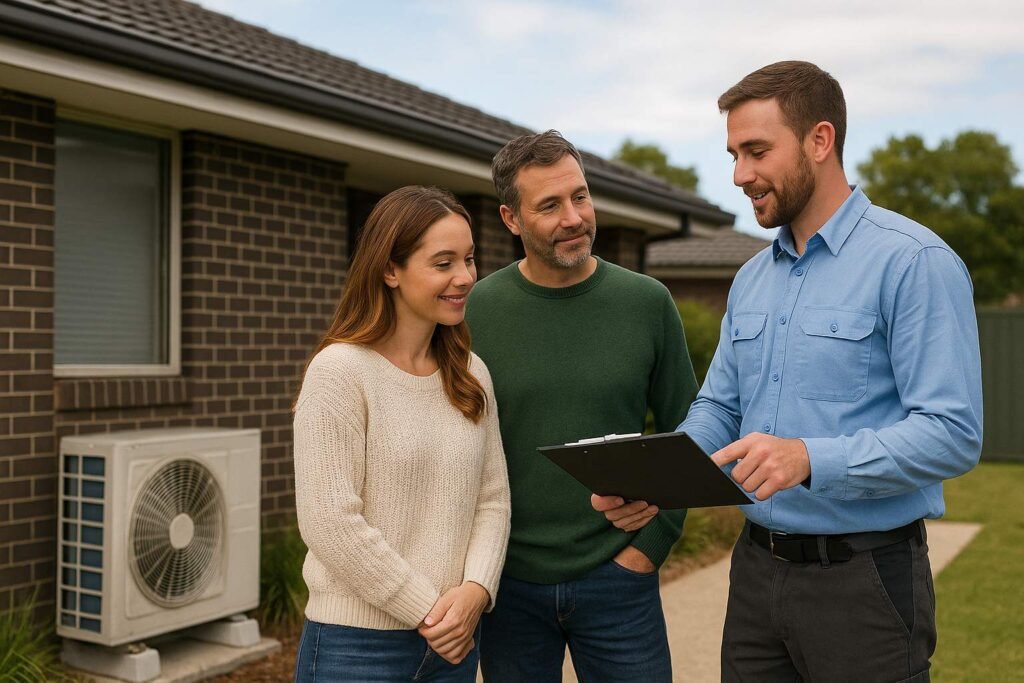

System Recommendation & Quote:
Based on the assessment, our team will recommend the most suitable system (split, multi, or ducted) and specific models that fit your budget and needs. We’ll explain the reasoning – for example, “a 7 kW split system for the living area and a 2.5 kW unit for the bedroom” or “a 12 kW ducted system with 4 zones for the whole house.” You will then receive a detailed quote outlining all costs, including unit(s) price, installation labor, any required materials (like ducts, piping, brackets), and any optional extras (e.g. Wi-Fi controller, specialized filters). Air Cooling believes in transparent pricing – the quote will be itemized and easy to understand, with no hidden fees. We’re happy to adjust or provide alternatives if needed, so you get a solution that fits your budget.
Scheduling the Installation:
Once you approve the quote, we’ll work with you to schedule a convenient installation date. During off-peak seasons (autumn or winter), we can often book you in pretty quickly; in the height of summer, slots fill up fast, but we strive to accommodate urgent jobs if someone’s without cooling. Our team will give you an estimate of how long the install will take (typically, a single split system install can be done in half a day, while a full ducted system may take 1–2 days). We also advise you beforehand if any preparations are needed from your side, like ensuring the electrical switchboard has capacity or clearing access to the work areas.

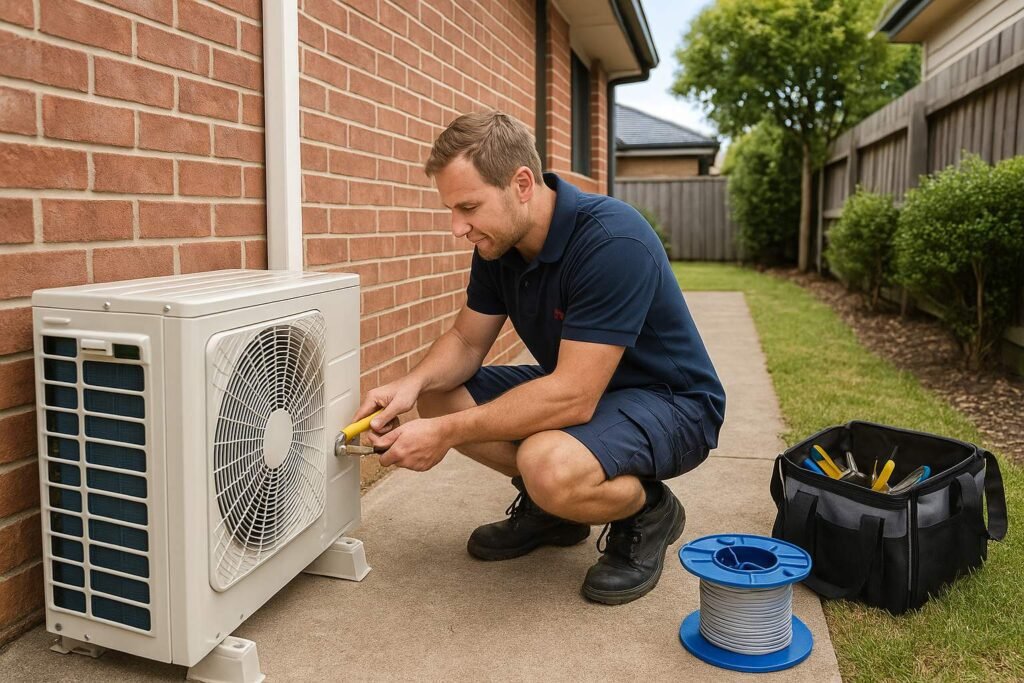
Professional Installation Day:
On the installation day, our licensed HVAC technicians will arrive on time and ready. (Air Cooling’s technicians are fully qualified, with ARCtick certification for handling refrigerants and NSW electrical licensing – you’re in safe hands.) We start by placing drop sheets and protecting your floors and furniture in the work areas. Then we proceed with mounting indoor units or duct outlets, positioning and securing the outdoor unit, and running the necessary refrigerant pipes, condensate drain, and wiring. For a ducted system, this involves installing the indoor fan-coil unit in the roof and running ductwork to each vent. We take care to install everything according to best practices and Australian standards – proper mounting for stability, correct pipe insulation, neat electrical connections, and so on. The installation team works efficiently and respects your home (minimal cutting or drilling, and we clean up any debris as we go).
Air Cooling Tips, Tricks and Guides
Connection and Commissioning:
After the physical installation, the team will connect the system to power and commission it. Commissioning includes: pulling a vacuum on the refrigerant lines and releasing refrigerant into the system, checking for leaks, and verifying all electrical connections. We then power on the system and perform a series of tests to ensure everything is functioning perfectly. This means checking the airflow, measuring that the temperatures are dropping/rising correctly in cooling and heating modes, listening for any unusual sounds, and confirming that any smart controls or thermostats are calibrated and communicating. We also set up zoning controls in a ducted system and verify each zone opens and closes properly.
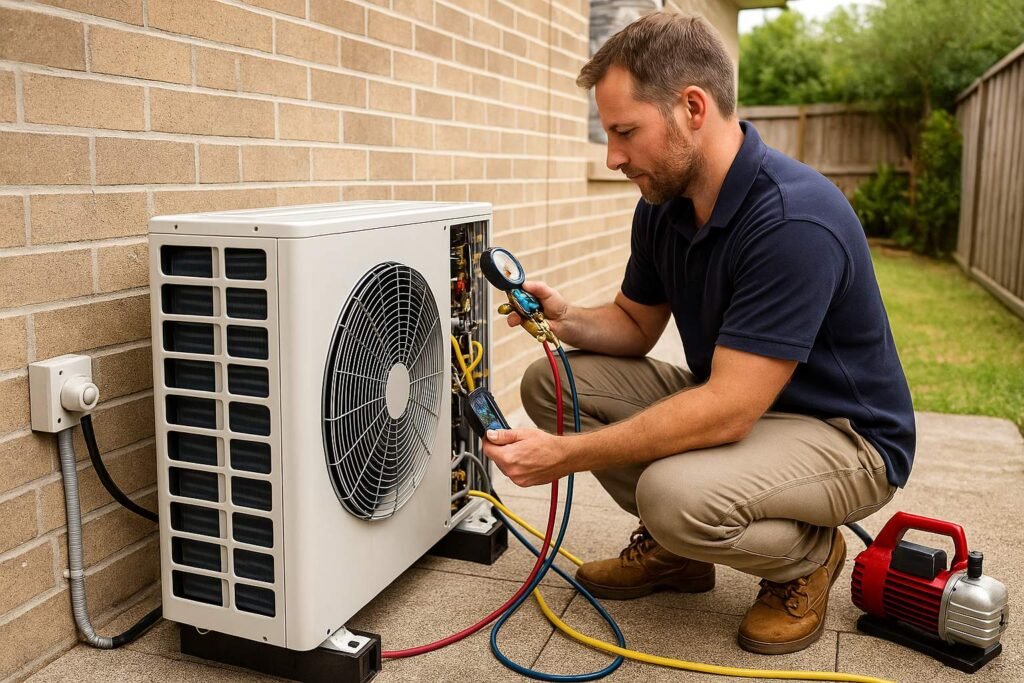
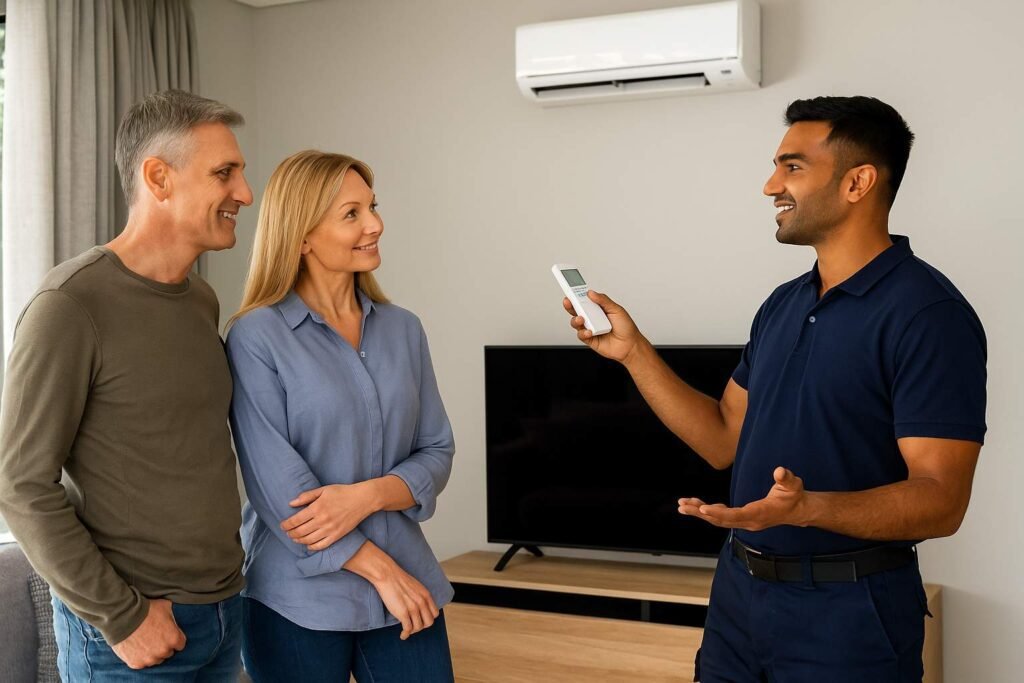
Customer Walk-through & Education:
Once we’re satisfied that the air conditioner is working as it should, we’ll tidy up the work area (yes, we take all packaging and installation scraps with us – your home will be left as clean as it was). Then, our lead technician will give you a thorough walk-through of the new system. This is part of Air Cooling’s commitment to great service – we want you to feel confident operating your AC. We’ll show you how to use the remote or wall control, explain different modes and energy-saving settings, demonstrate how to clean the air filters, and answer any questions. For smart systems, we can help connect it to your Wi-Fi or smart home app if applicable. We also go over warranty registration (most top brands have 5-year warranties – we’ll help you register the product online or provide the info you need).
After-Installation Support:
Our job doesn’t end when we pack up our tools. Air Cooling stands by our installations with robust after-sales support. You’ll receive documentation like user manuals and a copy of the installation compliance certificate. If you have any concerns or need adjustments in the days after install (perhaps you want us to fine-tune the airflow direction, or you have a question about a setting), we encourage you to call us. Additionally, we offer maintenance services which you can schedule down the track – many customers like to set up an annual service agreement right after installation to keep the system in top shape (more on maintenance in a later section). And of course, all our work is backed by a guarantee – if anything wasn’t done to your satisfaction, we’ll make it right.
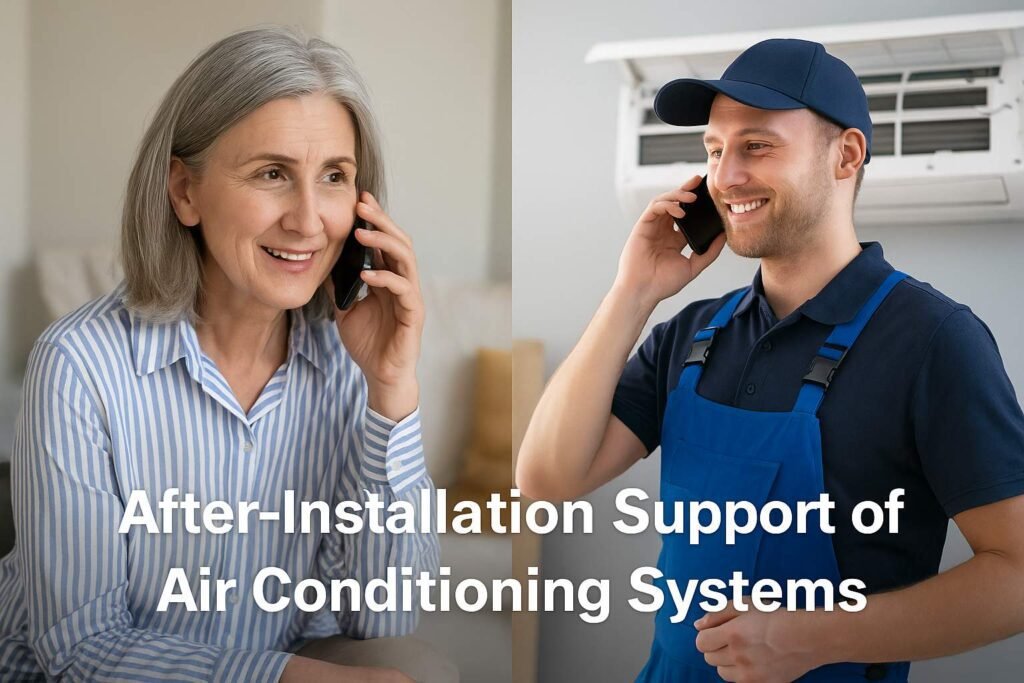
Summary:
By following a clear process like the above, Air Cooling ensures your air conditioning installation is done efficiently, safely, and with minimum fuss. Our goal is to leave you with a reliable cooling system and the knowledge to get the best performance out of it. From the first inquiry to the final handover, you’ll see why Air Cooling is known for professional service in the Sydney area.









